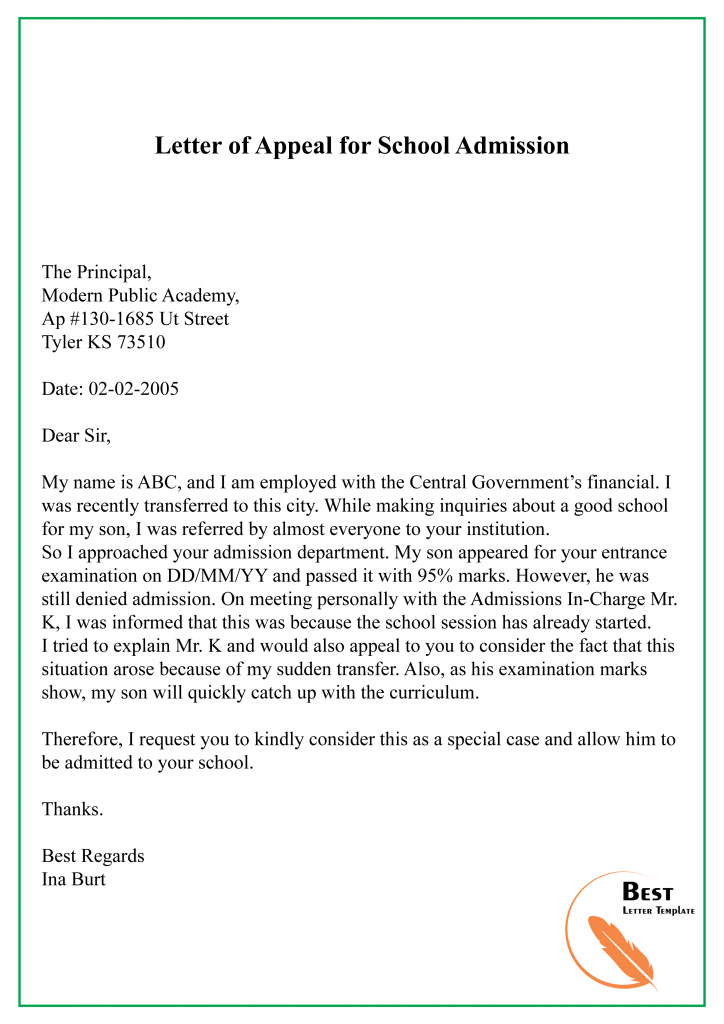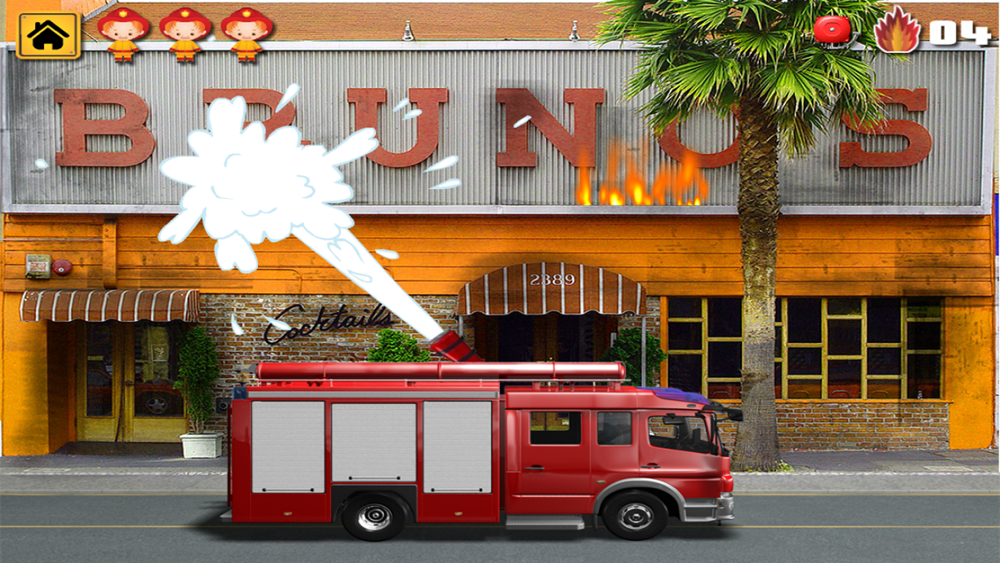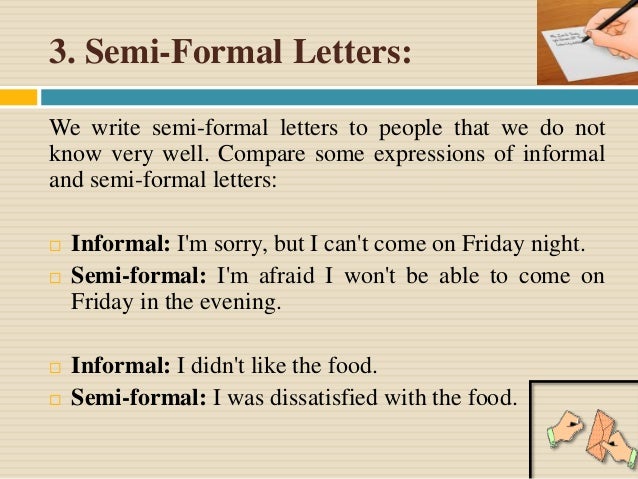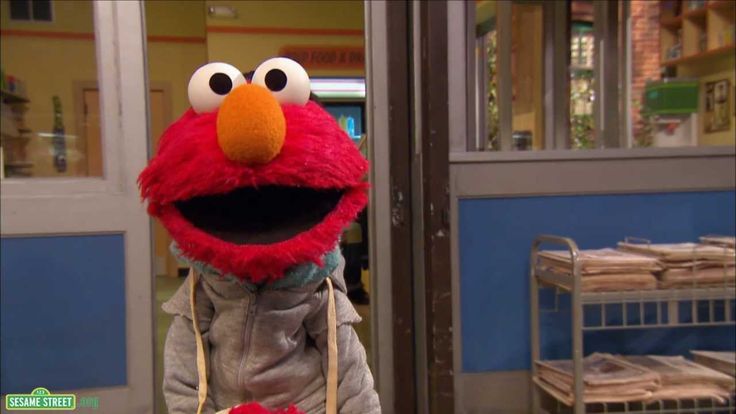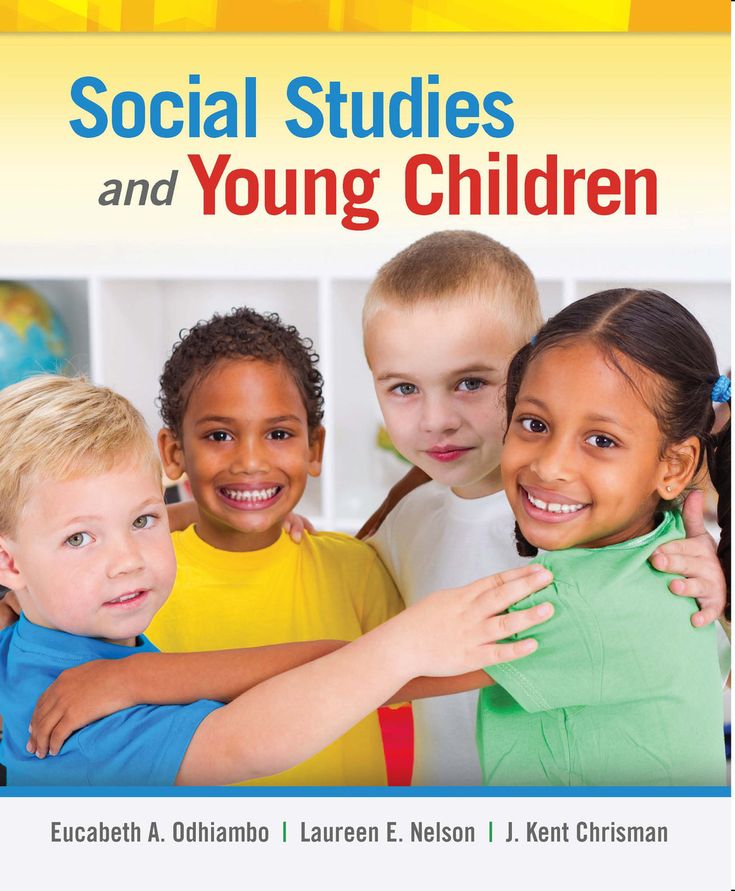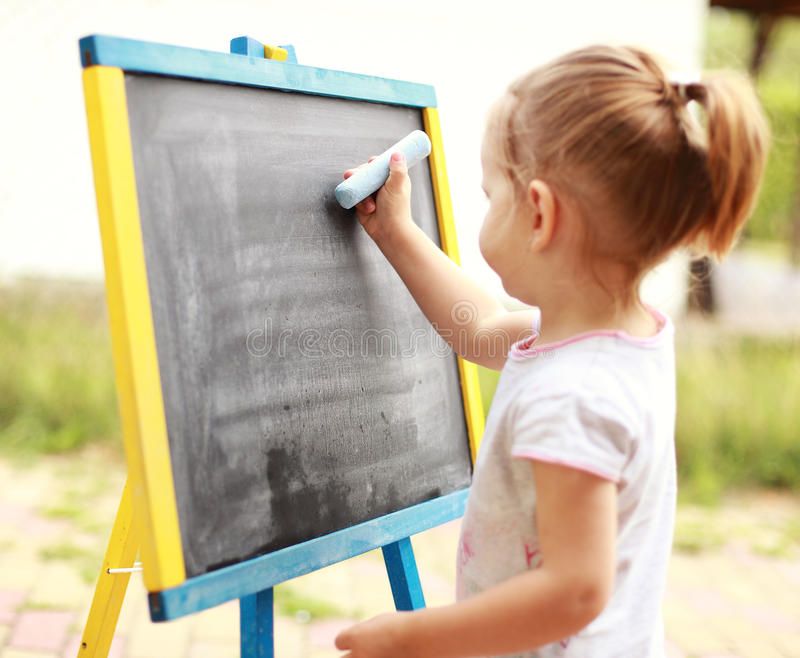Meditation techniques for kids
3 Meditations for Kids and the Whole Family
Whether you're a parent, teacher, aunt, grandfather, babysitter or otherwise spend time with kids of any age, try out these three practices to introduce kids to meditation and mindfulness.
Meditation, yoga, and other mindfulness practices are more popular, and helpful, than ever. Studies have shown that teaching kids mindfulness practices can build students’ attentiveness, respect for fellow classmates, self control, and empathy, all while reducing stress, hyperactive behavior, ADHD symptoms, and depression.
Yet only 1.6 percent of U.S. children meditate, according to the National Center for Complementary and Integrative Health.
Giving kids the tools to help them fend off negative thoughts and behaviors, build self-confidence, focus, and treat others and themselves with respect and appreciation is a gift they will have for the rest of their lives.
U.S. Rep. Tim Ryan instituted the Skills for Life program in Ohio schools to teach deep breathing, meditation, and other problem-solving skills to elementary-aged kids. What they found was that these practices helped kids balance their emotions, cut down on bullying, and increased awareness, and both students and teachers are excited about the program.
Another study done in the San Francisco Unified School District with more than 3,000 students found dramatic improvement in overall academic performance, including a spike in math test scores for students who practiced mindfulness meditation and “quiet time.” In one rough middle school, where gunfire, fighting, and suspension rates were the highest in San Francisco, when “quiet time” was integrated into curriculum, suspension rates dropped by 45 percent, attendance rose, and grades improved significantly.
Whether you’re a parent, teacher, aunt, grandfather, babysitter or otherwise spend time with kids of any age, try out these three practices to introduce kids to meditation and mindfulness.
1. The Balloon
This guided meditation brings a visual component to a very simple deep breathing exercise.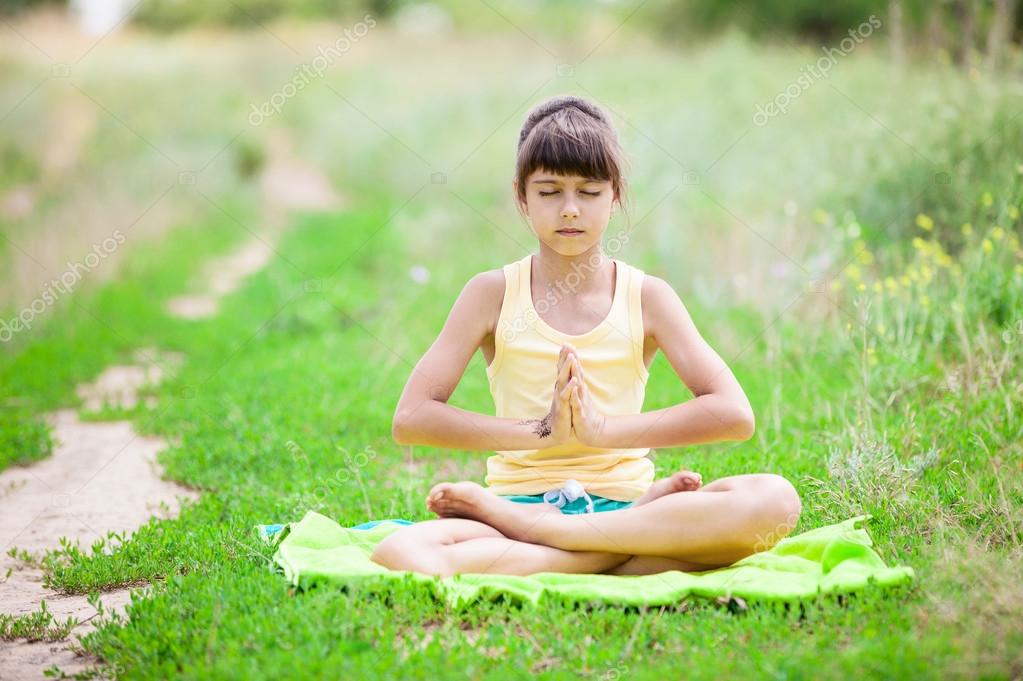 You can do this standing or seated.
You can do this standing or seated.
- Relax your body and begin to take deep inhales and slow exhales through the nose.
- Start to take a slow, deep breath to fill your belly up with air, as if you’re trying to blow up a big balloon. Expand your belly as much as you can.
- Slowly let the air out of the balloon (through the nose) as you release the breath from the belly.
- Encourage your kids to feel their entire body relax each time they exhale, each time air is slowly being released from the balloon. You can even make a “hissing” noise to encourage them to slow down the exhale even more, “Like letting air out of the balloon.”
- Continue for several minutes.
If the child you’re teaching is younger, you can add a little more detail and fun to the exercise to keep them engaged. Young kids, especially under the age of 6, love the extra movement when they’re learning to bring awareness to their breath. Encourage them to stand up in a relaxed way and follow these steps:
-
Ask them to think of their favorite color and picture a giant balloon of that color in their mind.
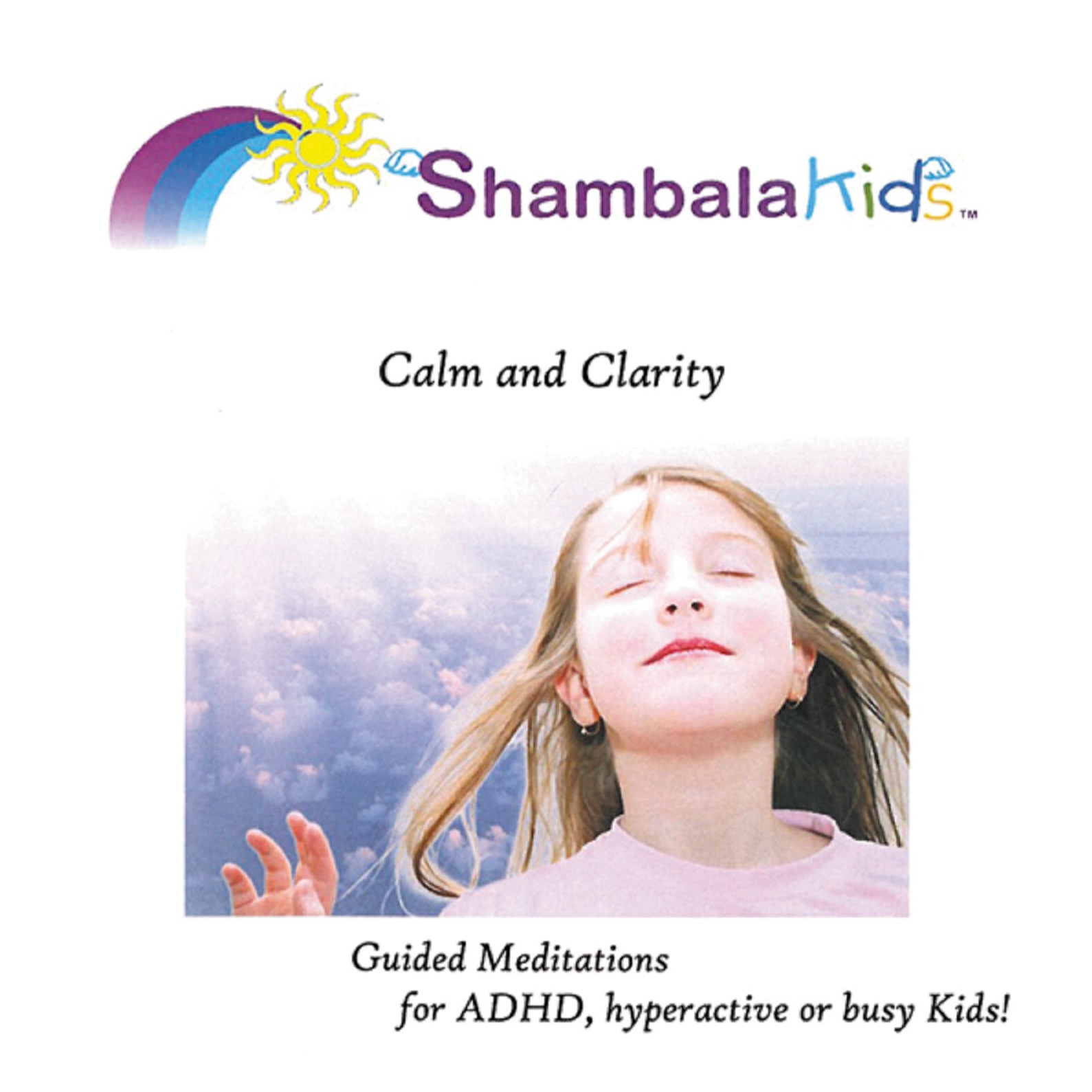
- Then have them take a slow, deep inhale through the nose, filling up their tummies with air as if trying to blow up a giant [their favorite color] balloon. As an option, you can also have them stretch their arms open and overhead to represent expansion and the big balloon.
- When their balloon is totally full, have them hold their breath at the top, and then you can “pop the balloon” for them (gesture finger to belly) and they can fall down as they exhale.
This one will likely elicit giggles and awareness of their breath.
2. Follow the Leader
This meditation works best for kids who are at least 5 years old. Ask your child to picture their best friend or a sibling—someone they do everything with or someone they look up to. Then ask them which one (your child or their best friend) usually leads. Usually one friend is the one who decides things—the one who is more of the leader; the other one is the friend who usually follows the leader. Ask them which they are.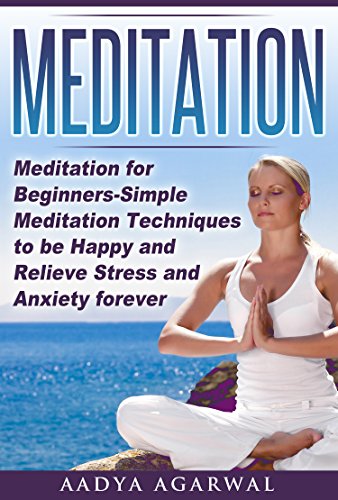
If they are the leader, you can tell them to picture themselves as the breath. If they are the follower, you can ask them to picture themselves as the mind. For this example, I’ll pretend that they’ve chosen their big brother as their best bud, and the big brother is the leader.
Say something like, “So you and your big brother do everything together. Let’s pretend that your breath and your mind are best friends, too. And that you are just like the mind—the follower, and your big brother is just like the breath—the leader.” Then follow the steps below to guide them through the meditation.
- Sit down comfortably and close your eyes.
- Bring all of your attention to your breath and slow it down, taking deep inhales and slow exhales.
- Let’s have the mind follow the breath—no matter what. Picture yourself as your mind, the one that’s following your big brother, your breath. Try to focus your mind on the breath and follow as the breath inhales and exhales.
- Count your breaths at the end of every exhale.
 Don’t let your mind count before the end of the exhale. The mind always wants to jump ahead, but don’t let it. Allow it to remain focused on being the follower.
Don’t let your mind count before the end of the exhale. The mind always wants to jump ahead, but don’t let it. Allow it to remain focused on being the follower. - Count to 10 slowly, always at the end of each exhale, continuing to let the mind follow the breath.
3. Guided Relaxation
This practice is great for kids (and adults) of all ages, whether they’re having trouble sleeping, stressed out, sick and in bed, or acting out. It’s based on the progressive muscle relaxation technique that Dr. Edmund Jacobson developed in the 1920’s. It’s used to help alleviate tension when people are in a situation that makes it difficult for them to relax. Guide your kids with these steps:
- Sit down or lie down comfortably and close your eyes. You can use pillows or blankets to make yourself as comfortable as you can be.
- Take a few deep, cleansing breaths as you begin to relax.
- Bring all of your attention to your right foot, noticing how it feels. Squeeze the right foot, making a fist with your entire right foot and all five toes; tense and squeeze it tightly.
 Hold this tension for two deep breaths.
Hold this tension for two deep breaths. - Then release all tension in the right foot suddenly. Relax it completely and notice the tension release. You may feel a tingling sensation in the foot.
- Take a deep breath, and then move on…
- Move your attention to your left foot. Same instructions as for the right foot.
- Move slowly up and around the body, squeezing one body part at a time to create tension, immediately followed by the contrasting sensation of release and ease. Follow each part with a deep, cleansing breath. Here’s a sample progression you can follow:
- Right foot, left foot
- Right ankle and calf, left ankle and calf
- Right knee, left knee
- Right thigh, left thigh
- All feet and legs
- Hips
- Butt
- Belly
- Entire lower body, from tummy down
- Chest and heart
- Right arm, left arm
- Right hand, left hand
- Shoulders
- Neck
- Face
- Whole body at once (do this one twice)
When you’re finished guiding your child through the relaxation technique, make sure they spend at least a few minutes in quiet, encouraging them to keep their breathing slow and steady.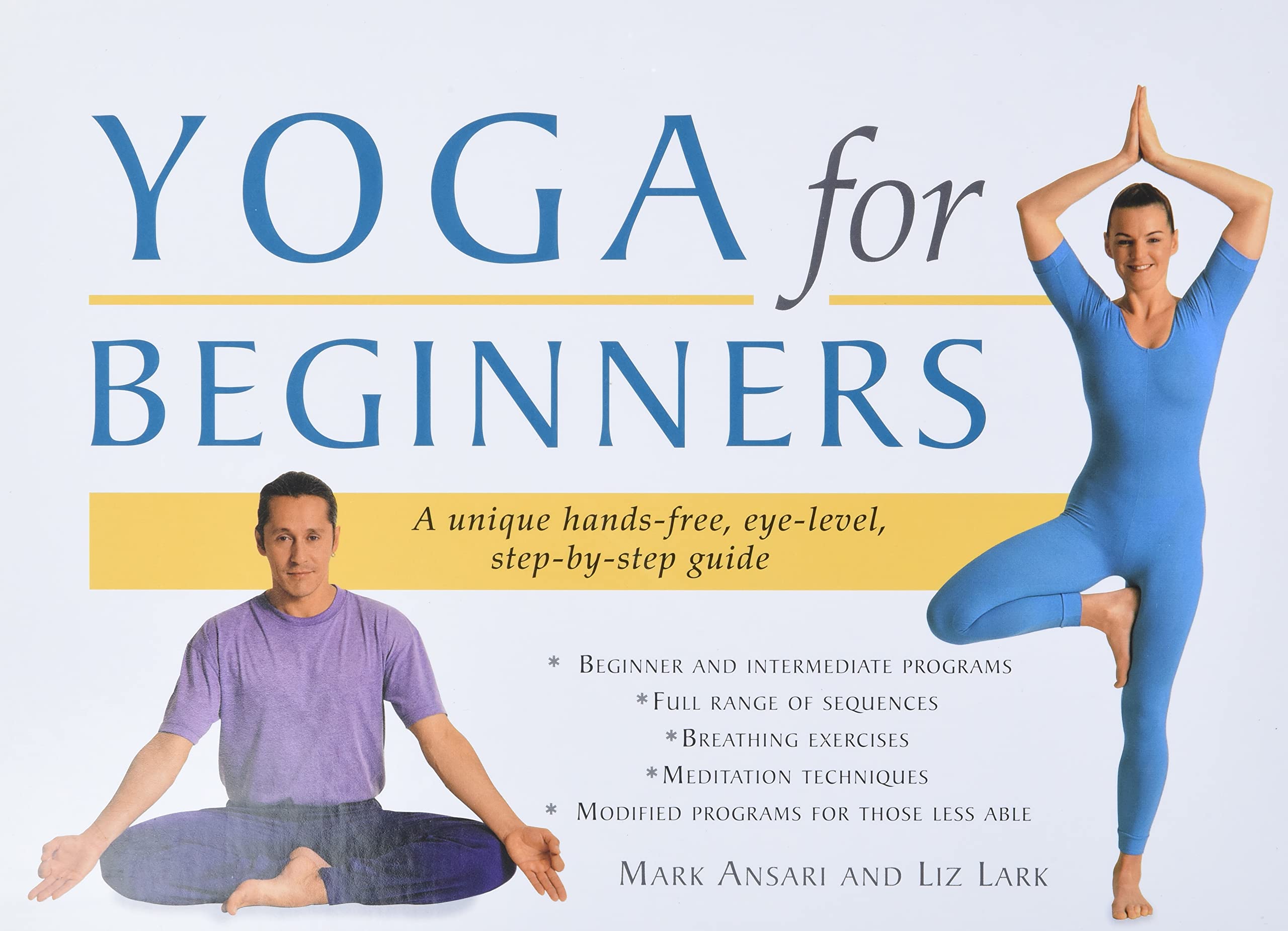
Download the Chopra Meditation & Well-Being App now for more powerful tools that will help your children find peace and calm in any situation—a skill that will benefit them into adulthood.
10 Easy Meditation Techniques For Kids
Children may always seem to be untroubled and stress-free, but the truth is they can feel stress as much as we, adults, can. Studies show that kids in this generation are more stressed than ever before.
As early as they are born, there’s an abundance of technology that overstimulates their senses—whether through television, cellphone, or with their complex “learning toys” that flash lights and create sounds. As they grow up, children are bombarded with activities, are mostly faced with pressure from friends, and are constantly kept busy by their hurry-up parents. For the most part, an active mind can be helpful, but not unwinding from this stimulation overload can impose unknown harm to their developing brains.
This is why as early as now, it’s important for our children to learn meditation and develop mindfulness—the ability to be aware of oneself’s presence.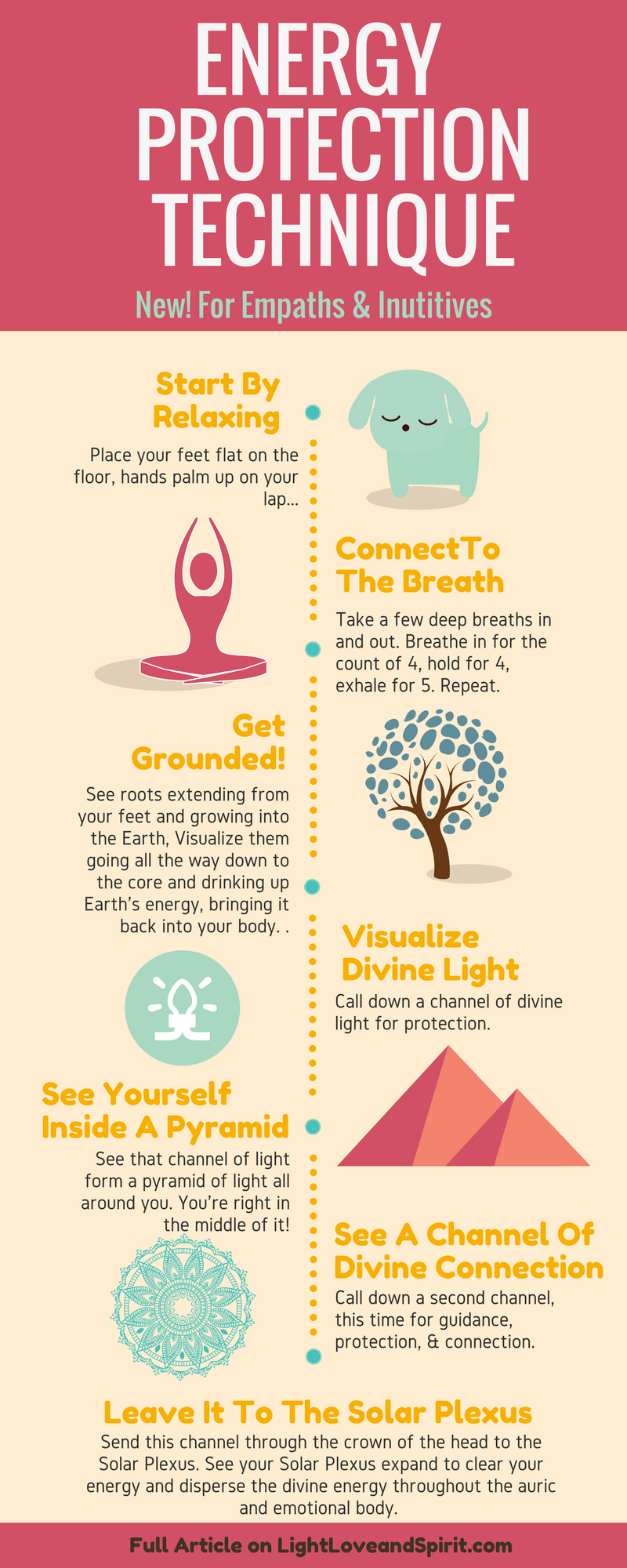 This helps us focus on our center, and be mentally acknowledging of our emotions, thoughts, and bodily sensations. Believe it or not, children can do it too. Here are some fun and easy techniques to start off your kids with meditation.
This helps us focus on our center, and be mentally acknowledging of our emotions, thoughts, and bodily sensations. Believe it or not, children can do it too. Here are some fun and easy techniques to start off your kids with meditation.
10 The Balloon
Breathing is the most basic way to release stress for adults and children alike. Conscious and meditative breathing gives us mental clarity and helps us be more present with our surroundings. To help your children with this technique, let them close their eyes and imagine a balloon inside their tummy.
RELATED: New Swaddle Blanket And Band Allows Parents To Monitor Baby's Breathing
Ask them to fill this balloon through their nose in five counts. You can ask them to do big, circular arm movements that signify the balloon is being filled up with air. Once they have breathed in deeply, let them hold their breaths in three counts and then slowly release the air through the nose. You can make hissing sounds as the air releases from their balloon to help them visualize the activity even better.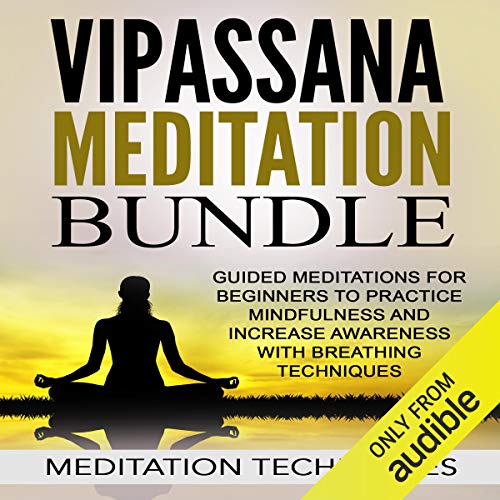
9 Candle Gazing Technique
Practicing gaze for children can improve attention and memorization skills. Although it may seem impossible for little kids who are absolutely fidgety at all times, it can still be done by using our magic tool—candles!
In a dark room, light a stick of candle and have your kid focus on the flame. Let them count every time the flame flickers. Reward them for each time they sit longer. You can also do this by just letting your kid focus consciously at the flame, quietly while breathing deeply. In yogic practice, this is called trataka which translates to “healing and cleansing the eyes.”
8 Bell Meditation
A chiming bell is an integral tool in meditation—particularly for religious practices—since time immemorial. Bells are said to be meditation enhancers as they promote a sense of peace and calmness, making an individual easily connect to himself or to a higher being.
Try introducing bell meditation to your kids by asking them to explore its sound.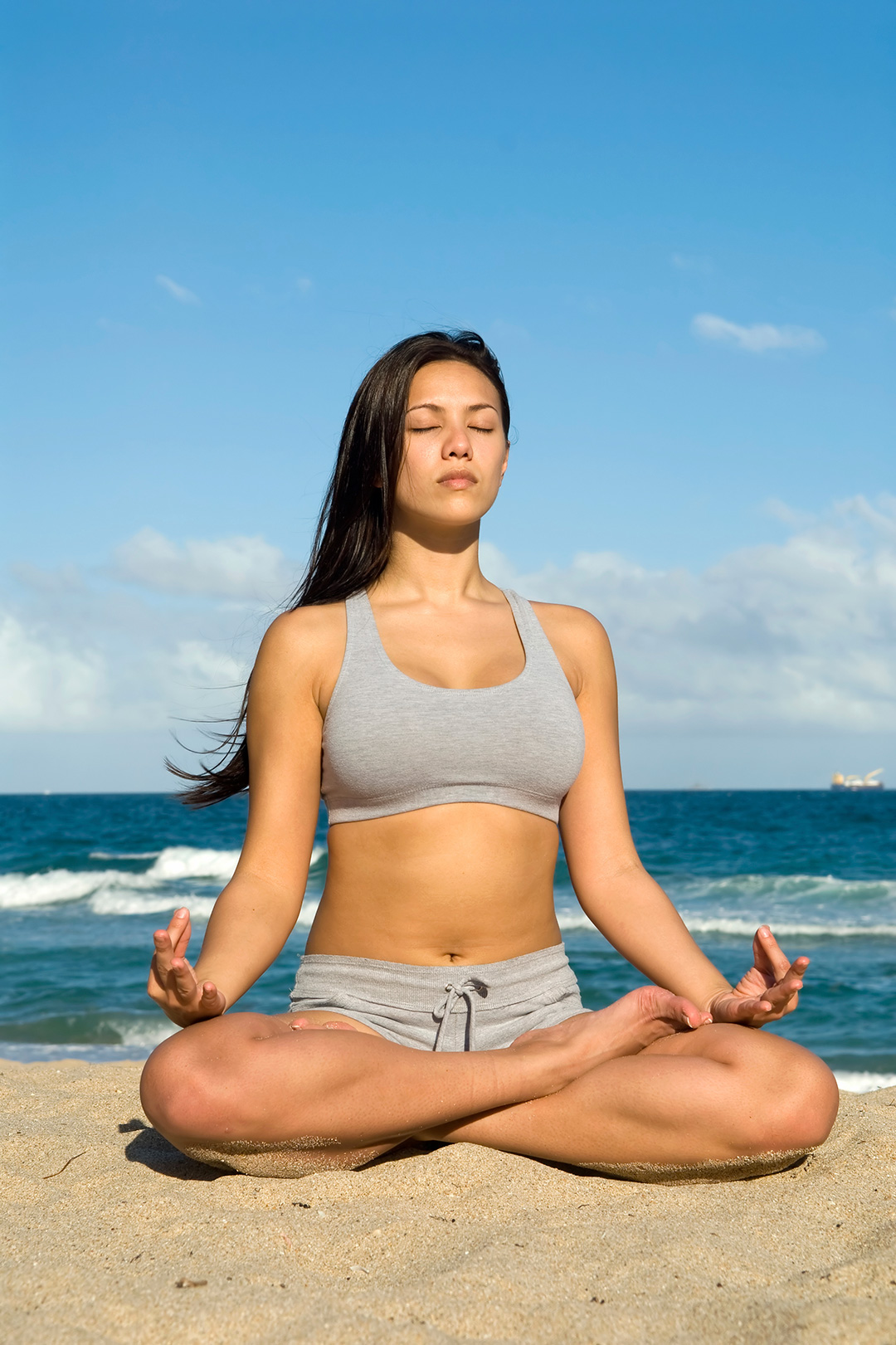 Have your kids sit up tall, with legs crossed, and eyes closed. Encourage them to listen carefully and raise their hands if the ringing stops. You can also help them explore their hearing senses by asking if you are near or far away as you ring the bell, or whether you’re in the left or right.
Have your kids sit up tall, with legs crossed, and eyes closed. Encourage them to listen carefully and raise their hands if the ringing stops. You can also help them explore their hearing senses by asking if you are near or far away as you ring the bell, or whether you’re in the left or right.
7 Guided Relaxation
Also known as Jacobson Relaxation Technique, this type of therapy focuses on tensing and relaxing certain parts of the body so we can be fully aware of our bodily sensations. This was developed by Dr. Edmund Jacobson and has been used as a relaxation therapy since the 1920s.
To facilitate this with your children, have them sit or lie down in the most comfortable position they can. Then have them close their eyes and reach their right foot. Let the kids grab their five toes in a fist and squeeze them while making two deep breaths. Release tension and relax. Mention to your kids that they can feel a tingling sensation in their feet.
After doing both feet, the kids can move forward several combinations like left and right ankle & calf, left and right knee, or left and right thigh.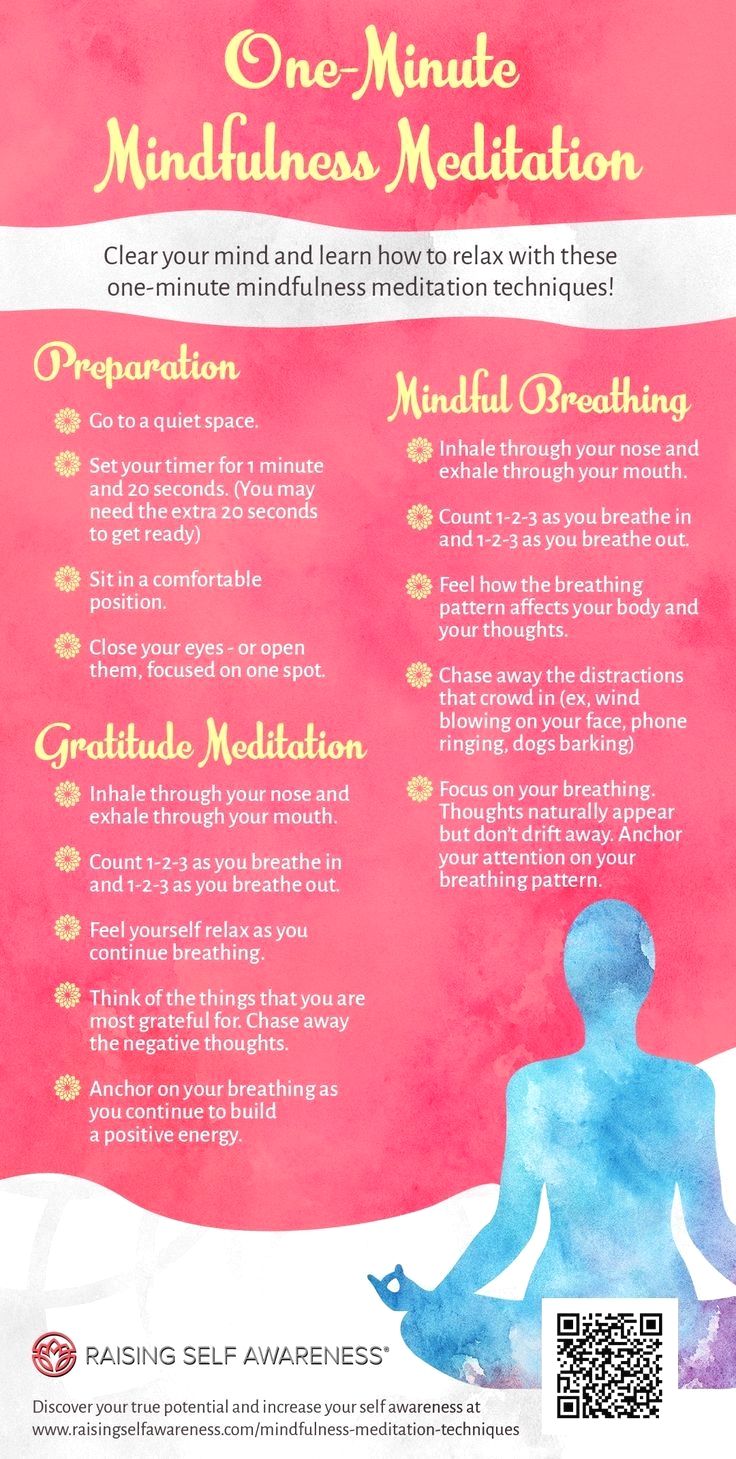 After this activity, give your children a little quiet time to relax and encourage them to breath slow and steady.
After this activity, give your children a little quiet time to relax and encourage them to breath slow and steady.
6 Cloud Gazing
Have you ever tried just staring blankly at the sky as you let your thoughts drift away like clouds? If you did, then good for you. Apparently, it has a relaxing effect and it can help give us a different perspective on our thoughts.
This activity is extremely easy for little children although the downside is they might not be able to sit for longer periods. To do it, just look up in the sky and let them notice how the clouds drift away and be in different forms. While doing this, it’s also important to be in a comfortable position—whether while sitting tall or laying flat on the ground. As always, breathing should be conscious and meditative.
While they’re letting their thoughts drift away, you may also ask them what they feel at the moment. Are they feeling happy or sad? Or it could be any feeling that they wanted to express. Notably, this exercise is best facilitated when the kids are feeling negative emotions.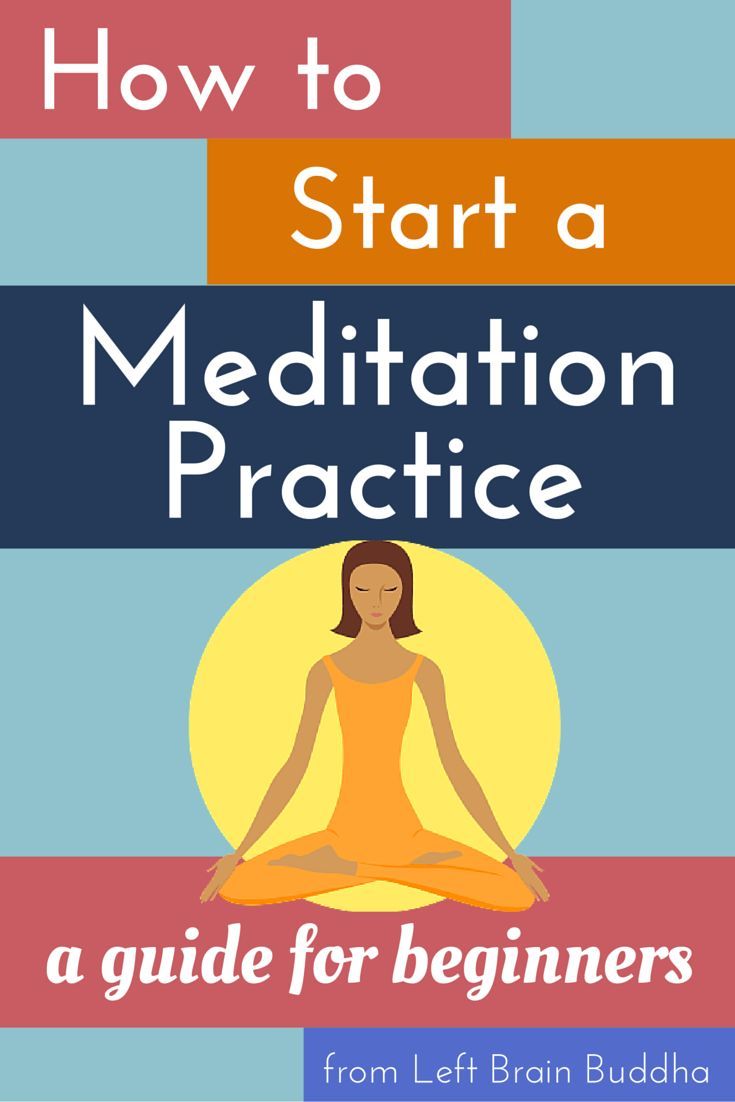
5 Take A Nature Trip
With all its mind-bending wonders, it’s just fascinating how mother nature works. In fact, by just merely glancing at natural sceneries, you’ll be surprised how you’ll feel relaxed and calm, and this has been scientifically proven time and again.
Studies show that exposure to nature can positively influence mental health. Try going on a walk in the woods with your children and let them consciously observe the wind, trees, flowers or sea.
RELATED: Doctors Are Now Prescribing Time In Nature To Patients
Grounding, or bare-footing, is also a good mindfulness technique for kids. All they have to do is bask under the warm sun, let the radiance flow into their bodies, and feel the Earth connect to their bodies. One study shows that “reconnection with the Earth's electrons has been found to promote intriguing physiological changes and subjective reports of well-being.”
4 Recite Chants or Mantras
Mantras are words or sounds that we recite over and over to build concentration while meditating. You may probably have heard a common chant before, the “om”, which is traditionally chanted at the beginning and the end of yoga. Interestingly, when chanted correctly, it gives a 432 Hz frequency—the same vibrational frequency for everything throughout the universe.
You may probably have heard a common chant before, the “om”, which is traditionally chanted at the beginning and the end of yoga. Interestingly, when chanted correctly, it gives a 432 Hz frequency—the same vibrational frequency for everything throughout the universe.
RELATED: Top 10 Yoga Poses To Do During Your Pregnancy
Expect that your child cannot immediately get the right way to chant “om” but there’s no harm in trying it. Proper pronunciation of the chant is prolonged “awe”, prolonged “oo”, and prolonged “mm”.
If chanting “om” isn’t your thing, try introducing your child to motivational mantras such as “I’m going to be happy today”, “I love life and life loves me” or let them come up with something more personal for themselves.
3 Join Yoga Classes
A multi-ethnic group of elementary age children are taking a yoga class together. They are sitting on their exercise mats and are meditating quietly.Yoga is a great exercise for both mind and body. Physically, it allows you to stretch and bend, thereby promoting muscle strength and flexibility. Mentally, it helps improve focus, coordination memory and even regulates depression since one component of yoga is focusing on the present.
Mentally, it helps improve focus, coordination memory and even regulates depression since one component of yoga is focusing on the present.
Try joining a yoga class for adults and children. Not only will this be a healthy activity, it will also strengthen your bond with your kids. Yoga for children offers enormous benefits as it enhances body awareness and connection with inner self. It also helps kids develop an intimate relationship with their surroundings.
2 Bedtime Meditation
Bedtime meditation is one of the easiest techniques we can teach our kids, and in fact, we might like to try it for ourselves too! When toddlers refuse to be put down or when it’s the end of a tiring day, try to facilitate this technique for a better night’s sleep.
To start, cultivate a calm environment. Keep only the soft lights on and make sure the temperature is not too hot nor cold. If possible, run a soft, calming background music and diffuse age-appropriate aromatherapy. Encourage the kids to do three deep breath repetitions, one at a time, with eyes closed.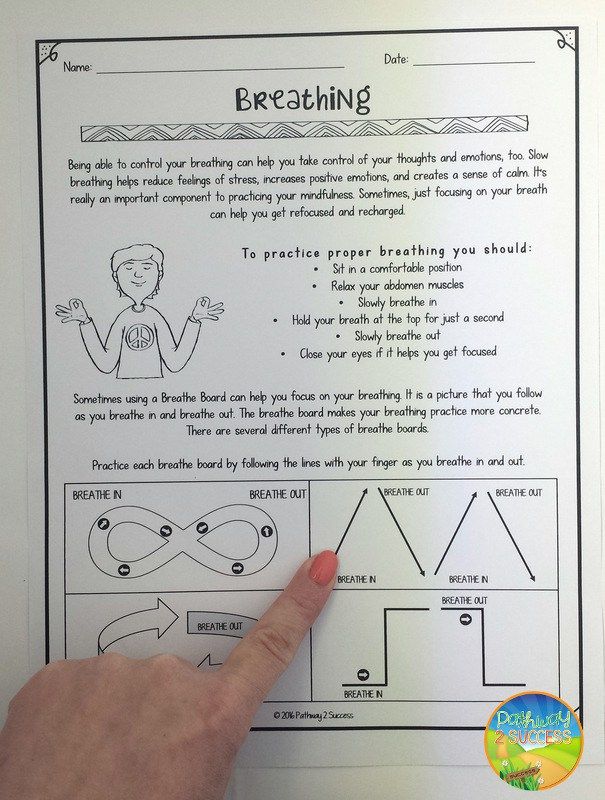 Relax and let them fall calmly into sleep.
Relax and let them fall calmly into sleep.
1 Light Bath Meditation
This activity is for older kids like teenagers who are tensed and exhausted with their everyday tasks, or who may have harbored negative feelings in the past. Light bath is a guided meditation that helps one infuse radiating energy, love, and even forgiveness throughout our tensed body.
To facilitate, have the kids sit tall or lie down on their backs as comfortably as they can. Instruct them to identify and feel what parts of their body are feeling most tensed. To relieve this tension, and including all the negative energy they feel, make them feel inner peace and visualize it as a form of light traveling across their bodies. Let the light travel and stay in the mind for a while, then move into body parts like eyes, mouth, ears, legs, and heart.
NEXT: How To Positively Handle Negative Influences On Teenagers
Meditation for children: 3 exercises for every day
Listen to your body For parents
Teaching children meditation techniques increases mindfulness, develops self-control and empathy.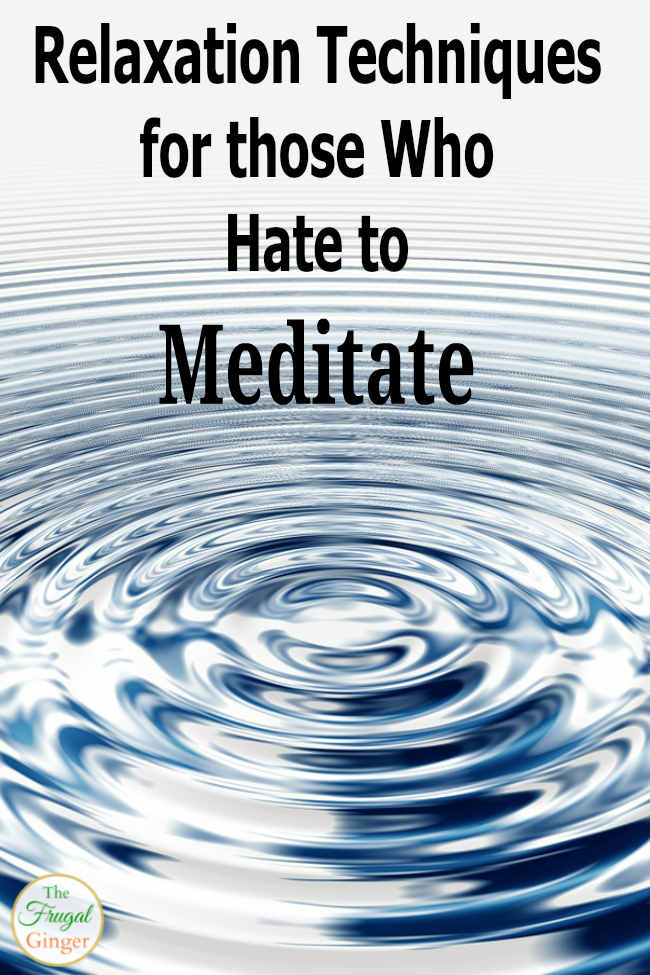 Meditation helps with stress, hyperactivity and depression in schoolchildren and improves academic performance in the sciences.
Meditation helps with stress, hyperactivity and depression in schoolchildren and improves academic performance in the sciences.
It is generally accepted that meditation requires special adult self-discipline and concentration. In fact, this technique can be used at any age. The main thing is to choose the right exercises. Three ways to get started with kids.
1. Balloon
This is a simple deep breathing exercise with a strong visual component. Performed sitting or standing.
Exercise
- Relax and inhale and exhale deeply through your nose.
- Take a slow, deep breath and try to fill your belly with air, as if you were trying to inflate a big balloon. Try to inflate your belly as much as you can.
- Slowly release the air from the balloon, exhaling through the nose.
Remind the child to relax the whole body with each exhalation, each time the air slowly leaves the balloon. At the same time, try to make a quiet “shhhh” so that the exhalation is slow.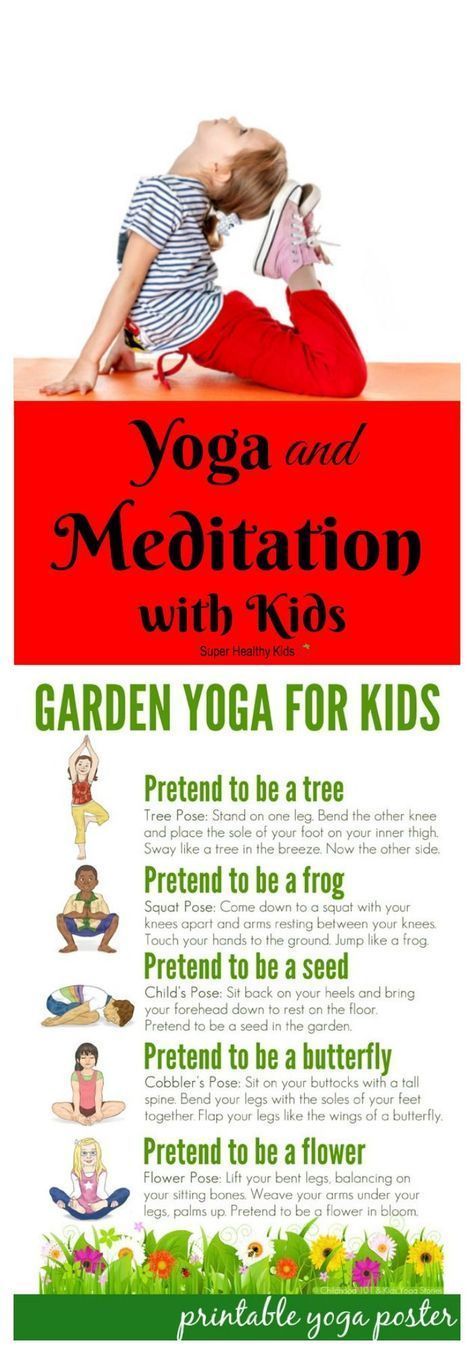 Continue for a few minutes.
Continue for a few minutes.
For restless preschoolers, a more dynamic version with your participation is suitable.
Exercise
- Close your eyes and imagine your favorite color and then a huge ball of that color in your mind.
- Inhale slowly and deeply through your nose, inflating a large ball of your favorite color with your belly. Spread your arms out to the sides and above your head, imagining how this ball grows inside the abdomen.
- When the balloon is full of air, hold your breath.
- Now I will burst your balloon (press your finger to the child's stomach), and you exhale sharply and fall to the floor.
2. "Follow the Leader"
More suitable for children over five years old. Ask your child to introduce a friend, sibling, or someone they enjoy spending time with. Then ask which of them is the leader and comes up with games. If your child sees himself as a leader, ask him to imagine that he is "breath".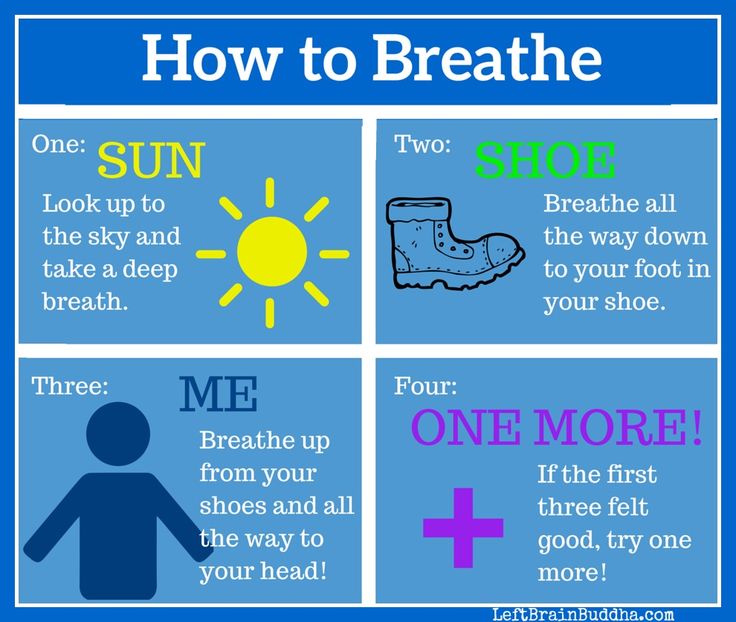 If he prefers to follow the leader, he is a "thought". For example, he chose his older brother as his best friend, and then the older brother is the leader.
If he prefers to follow the leader, he is a "thought". For example, he chose his older brother as his best friend, and then the older brother is the leader.
Exercise
- Sit back and close your eyes.
- Concentrate on your breath and try to breathe more slowly, taking deep breaths and slow exhalations.
- Let your thoughts follow your breath. Imagine that you are a thought, and your breath is your big brother.
- Count how many seconds your exhalation lasts. Don't let your thoughts run ahead. She will try to do this, but try to make her follow the breath.
- Before exhaling, slowly count to ten.
3. Universal relaxation technique
This practice is suitable for both children and adults. She solves problems with sleep, a long period of stress or illness, liberates before public speaking. It is based on a progressive muscle relaxation technique developed by psychotherapist Edmund Jacobson in the 1920s for anxious patients.
Exercise
- Get into a comfortable sitting or lying position and close your eyes. You can lie down on a pillow and cover yourself with a blanket.
- Take a few deep breaths in and out.
- Direct your attention to the right foot. Squeeze it very, very hard, tucking all five fingers inward. Hold it in this position for two deep breaths.
- Sharply relax your foot and feel how the tension dissolves. You may feel a slight tingling in your muscles.
- Shift your attention to the left foot (the “tension-relaxation” cycle is repeated).
- Slowly move along the whole body, continuing to squeeze and unclench the muscles (if this is difficult, you can squeeze or massage them with your hand) and breathe deeply. Here is an approximate sequence: right foot - left foot; right shin - left shin; right knee - left knee; right thigh - left thigh; feet and legs along the entire length; hips; buttocks; stomach; the whole body below the belt; rib cage; right hand - left hand; right palm - left palm; shoulders; neck; face.
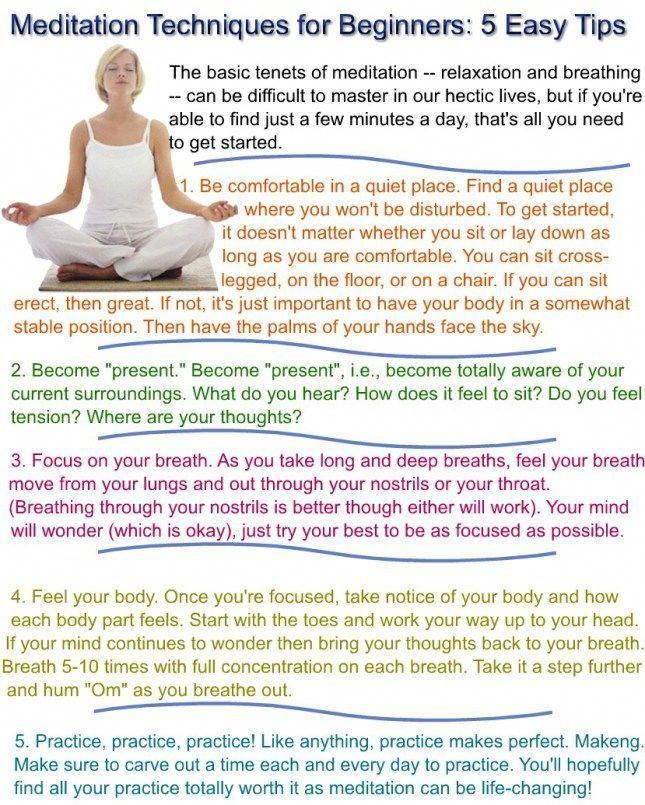
Text: Xenia Diakova-Tinoku Photo credit: Getty Images
New on the site
“I wash my head 25 times, eat dumplings in multiples of five and count sips of water. Is it OCD?"
“The guy doesn't love me, insults me, but promises to marry me. Should we hope for the best?
“Better than ever!”: how sex changes after marriage - 24 responses from readers
5 types of toxic parents: how to fix relationships - psychological analysis
Sex without love: can passion turn into a deep feeling? accepting yourself and your body
A Parent's Guide to Helping Your Children
Today's youth experience anxiety and stress. Much more than it should. According to recent statistics published by the American Academy of Pediatrics,
Up to 30 percent of children and young adults will experience an anxiety disorder in their lifetime.
Parents and other caregivers should teach our children good stress-reducing habits and introduce them to mindfulness activities that help them grow, support mental health, develop self-control and self-esteem, and reduce anxiety.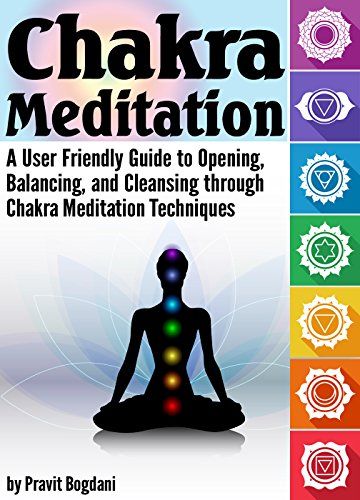
One of the best ways to do this is meditation. We cover everything you need to know about meditation for kids, including what the practice looks like, how to teach it, and why it works. While teaching mindfulness to children may seem like a daunting task for parents or teachers who want to improve their children's well-being, once you understand what mindfulness and meditation practice is, everything becomes much easier.
Overview: Meditation for Children
In some ways it is not surprising that children develop stress disorders early. We live in a sensory world. There are real threats, and the unknown can be scary. Today's children suffer from attention spans and an inability to concentrate while studying, in the classroom, or even at play.
It is tempting to think that you can protect your children from all the fears and stresses throughout their lives; the best answer is to explain how to deal with difficult times. Children's meditation can help them with this.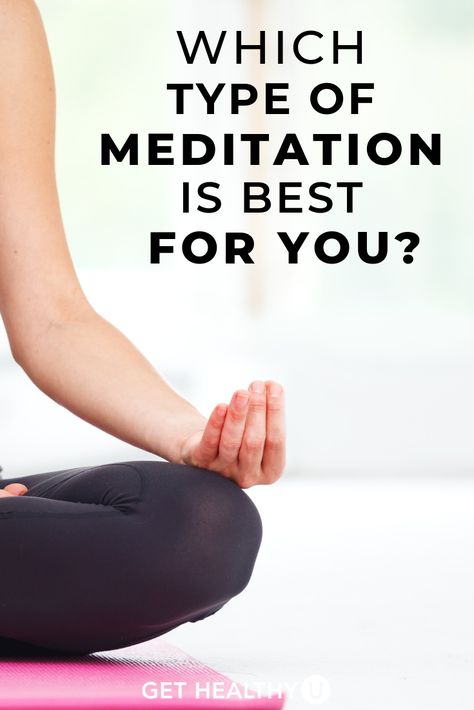
Establishing a solid meditation practice at an early age is a good intention for your children and for yourself as parents and educators.
Whether it's deep breathing exercises, guided meditations, sleep stories, yoga, or any other mindfulness-based intervention, there's no doubt that children of all ages will benefit from mindfulness training from an early age.
Diagnosis of anxiety and behavioral disorders in children has increased dramatically.
Now let's define what meditation is?
For both children and adults, meditation is a practice that can bring great joy and comfort to your life. Although it can be difficult to define meditation in one sentence, in general it can be said that meditation is a mind-body practice that trains mindfulness and concentration.
There are many benefits to meditation. For example, it helps improve concentration, soothe frayed nerves, relieve stress, promote self-complacency, and promote happiness.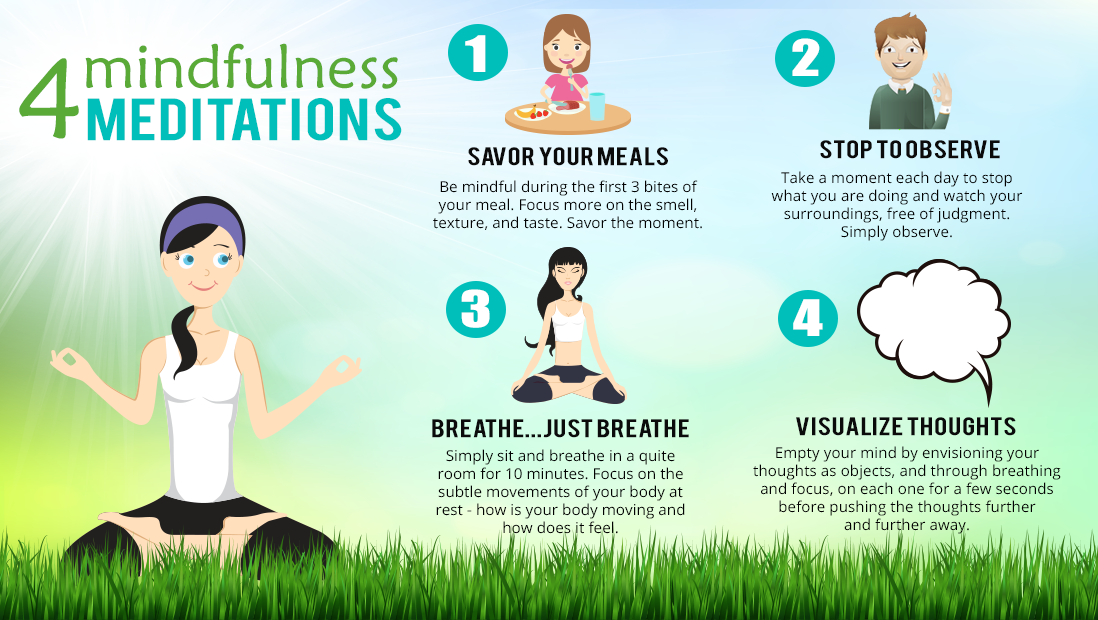 All these benefits are available to both children and adults.
All these benefits are available to both children and adults.
Can children meditate?
Yes! Although a child's meditation will not look the same as an adult's meditation, the basic foundations of the practice remain. Children, for example, may benefit from guided imagery. Their duration may be shorter. And, of course, it is very important to choose meditation for the child. Some, for example, do not tolerate sitting meditation for more than a few minutes very well. However, they are fine with meditating while walking outdoors, mental painting, telling sleep stories in a soothing voice, or even listening to audio recordings as guided meditations.
Mantra meditation can spark curiosity in older children as it requires
extra attention and patience, but can be a great option if your children are willing to dive deeper into
Why is meditation important for children?
Up to 30% of young people develop anxiety disorders.
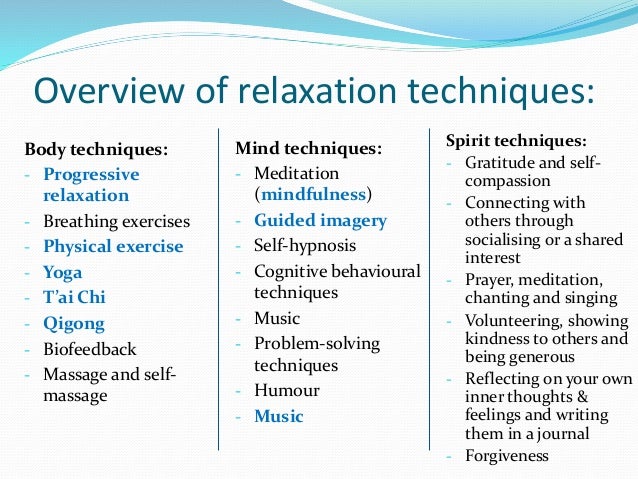
- American Academy of Pediatrics
Children are not immune from the stresses of life. In recent years, the number of diagnosed anxiety and behavioral disorders in children has increased dramatically. These include attention deficit disorder (ADD), attention deficit/hyperactivity disorder (ADHD), and obsessive-compulsive disorder. First, it tells us a few things as our understanding of how conduct disorders manifest in children grows. Second, rates of diagnosis are rising as children are tested and diagnosed with these disorders. In other words, today's children are not necessarily more stressed than children of the past. However, it also tells us that children are more prone to anxiety and stress than we previously thought. As parents, we must be vigilant and help our children cope with stressful situations in life and instill self-care in their lives from an early age.
Can meditation help children cope with stress?
Yes.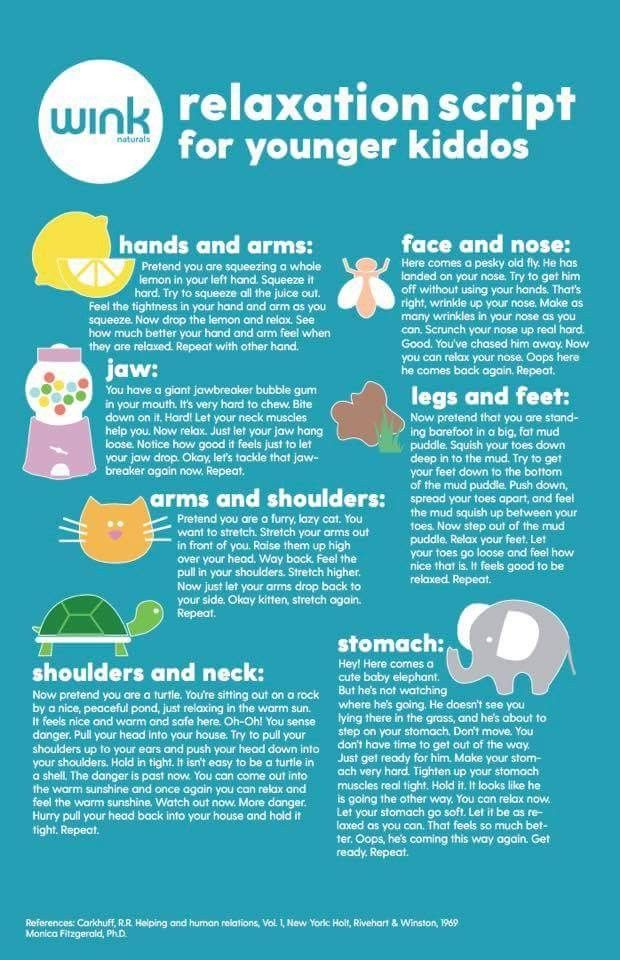 Fortunately, meditation can help calm the symptoms associated with problematic disorders. Children's meditations have the same effects as adults' practice. Even short, simple meditations for beginners can have amazing benefits. A recent study in the Journal of Positive Psychology found that just 15 minutes of meditation has the same positive impact as a full day of vacation.
Fortunately, meditation can help calm the symptoms associated with problematic disorders. Children's meditations have the same effects as adults' practice. Even short, simple meditations for beginners can have amazing benefits. A recent study in the Journal of Positive Psychology found that just 15 minutes of meditation has the same positive impact as a full day of vacation.
Meditations for children
-
Guided Meditation for Children: Live or recorded guided meditation during which the instructor gives instructions for the meditation session.
-
Sleep Meditation: These meditations are gentler and more soothing. Often, meditations are accompanied by music, they calm the mind and prepare the body for sleep.
-
Mindfulness Meditation: Meditation and mindfulness simply go together. Mindfulness meditation means awareness (full attention) to the present moment instead of focusing on the past or the future.
Benefits of meditation for children
Children can learn through meditation:
1.
 How to breathe properly.
How to breathe properly. Many people learn to breathe incorrectly (shallowly) in childhood. Meditation can help develop proper breathing skills. Deep breathing helps focus and relax, which teens, children, and even young adults may not be aware of and express in their own way.
2. How to deal with stress and anxiety.
Meditation helps to re-adjust the mind and calm the hectic thoughts and sharp, stressful emotions.
3. Better focus.
Mindfulness meditation, in particular, can be helpful in improving concentration. This is because staying in the present requires significant attention and awareness.
4. How to calm down and regulate difficult emotions.
Children often experience strong emotions and do not know how to calm down. Meditation helps center the mind and provides a soothing cushion for difficult emotions. If your child loves music, consider downloading a meditation that includes children's music.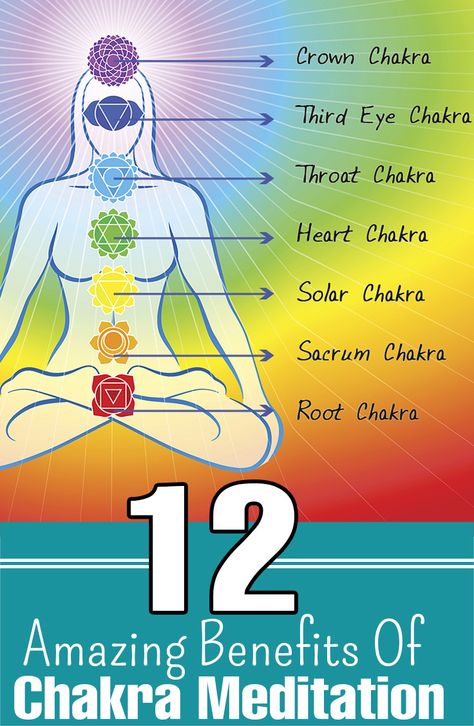 The audio recording can be turned on before bedtime or in the morning when the child is getting ready to start their day.
The audio recording can be turned on before bedtime or in the morning when the child is getting ready to start their day.
5. How to sleep better.
If you want to use bedtime meditation for kids, this is a great idea. Children's bedtime meditation can help alleviate some of the problems they face while resting. Many children feel too anxious, scared, or energetic to properly prepare for bed at night. Meditation before bed is a great remedy for a wandering mind.
Teaching children guided meditation is easier than you think
There is no wrong way to teach a child to meditate. But here are some tips:
1. Start small. Even five or ten minutes of meditation is better than no meditation at all. Before the start of the school day, sit in a quiet place (perhaps even in the car when you drive the children to school) and dedicate time to meditation practice.
2. Try family meditation. Meditation can be a wonderful experience for all family members, including children.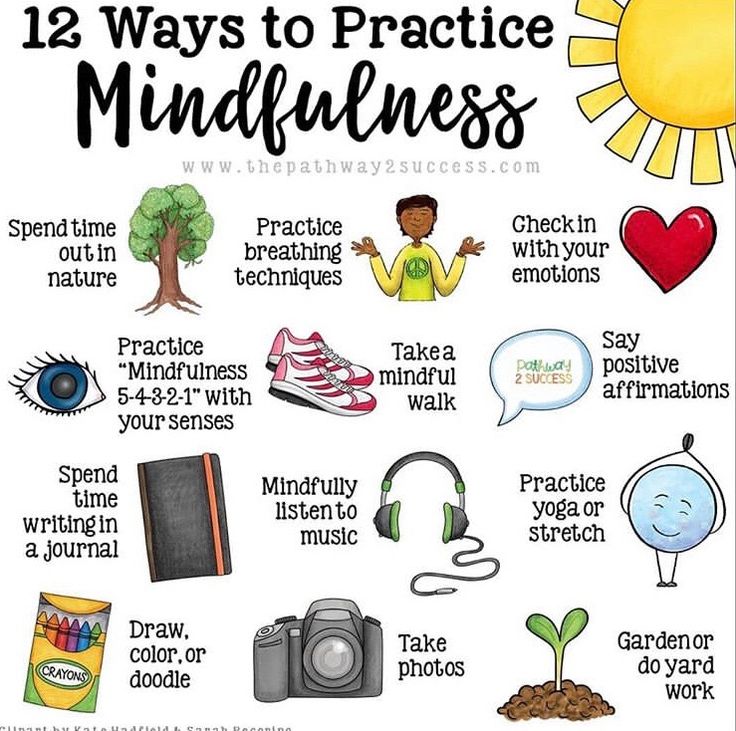 This is a great way to bond with your child and build more trust and intimacy.
This is a great way to bond with your child and build more trust and intimacy.
If you have never meditated before, ask an instructor for a quick start session.
3. Don't worry about the details. It is natural for someone to giggle, move, or be distracted and restless in body and mind. This practice is primarily aimed at manifesting itself. They may also fall asleep.
Meditation for Children: Frequently Asked Questions
At what age should you start meditating?
You can start mindfulness meditation or short, informal meditation sessions with your children at any time. As a general rule, seated meditations are best for children six years of age and older.
How do you meditate as a family?
Here is a quick family meditation: Find a quiet place. Sit on the floor and assume a comfortable, mindful posture. Straighten your back and close your eyes slightly. Set a timer for two to five minutes. Focus on taking a deep breath: Inhale.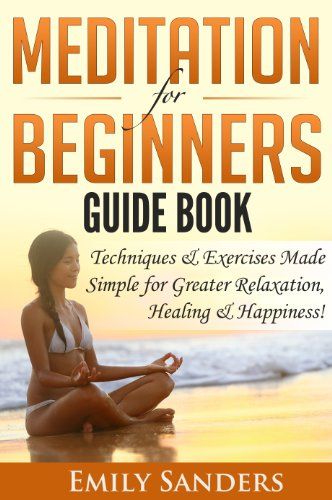 .. and exhale... Inhale... and exhale... Inhale... and exhale... until the timer runs out. Breathing exercises are the best way to introduce children to meditation - they give them the opportunity to focus and concentrate.
.. and exhale... Inhale... and exhale... Inhale... and exhale... until the timer runs out. Breathing exercises are the best way to introduce children to meditation - they give them the opportunity to focus and concentrate.
Does meditation help in studies?
Yes. Meditation has been proven to help children focus better and be less distracted. It helps to improve attention during classes and while studying. Meditation can also improve memory and provide mental and physical support to children as they learn. You can even teach your kids to meditate during their lunch break or before exams and tests at school.
Can babies meditate?
While you probably won't be able to get your little one to sit up during full meditation, you can work on focusing attention together. Try focusing on one object (like a ball) for 30 seconds. Look at it with your child and describe everything about it (color, shape, size, texture, smell...). This is a great mindfulness meditation for toddlers.

